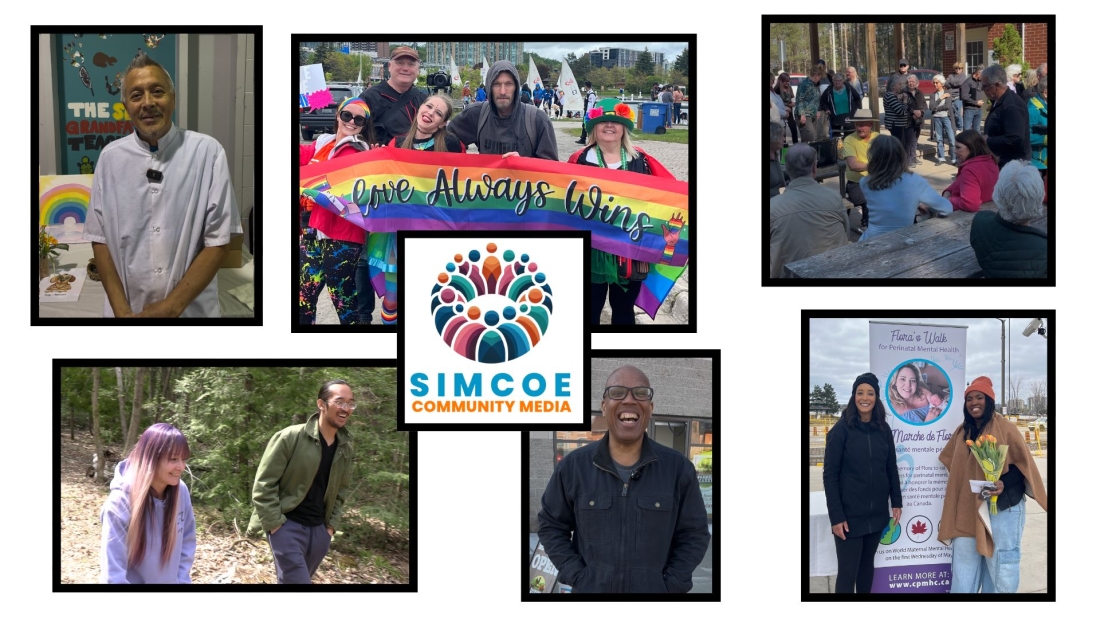
This past quarter has been one of the most eventful and impactful both for Simcoe Community Media (SCM) and for me as a journalist.
From a once-in-a-generation federal election to the worst ice storm in Simcoe County’s history, the stories we’ve covered have not only shaped the news cycle but also amplified the voices of communities that often go unheard. We also marked Indigenous History Month and Pride Month, and launched a deeply personal new series, The Library of Lived Experiences, in partnership with Ryan's Hope and Moms Stop the Harm.
In April, Canada held an unprecedented federal election. Widely regarded as a defining moment in our country’s history, the campaign was shaped by fears around sovereignty and foreign interference, spurred by Donald Trump’s inflammatory claims about turning Canada into the “51st state” through economic coercion. SCM provided wide-ranging, hyperlocal election coverage across Simcoe County ridings, including candidate debates, one-on-one interviews with political hopefuls, and thoughtful conversations with seniors, climate advocates, and community leaders. With the help of volunteers, we also brought community voices into the spotlight through on-the-ground interviews outside City Hall, capturing the issues that mattered most to everyday voters.
June saw us honour both National Indigenous History Month and Pride Month. For Indigenous History Month, I covered artist and educator Lucia Laford (Waawaaskone Kwe), who visited the Barrie Native Friendship Centre to teach about Woodland-style art—a form deeply tied to Anishinaabe storytelling and cultural expression. For Pride Month, I covered the parade and community events, but also broke an exclusive: Barrie Council’s quiet decision to deny the downtown venue for this year’s Pride celebration, effectively forcing the event out of the city’s core for the first time in years.
Throughout the quarter, I remained focused on ground-level journalism. I joined outreach workers from Ryan’s Hope, including Christine Nayler, to report on the aftermath of the Barrie ice storm in the feature “Barrie’s Ice Storm Fallout: Community Workers Step Up as City Falls Short.” Other deeply resonant stories included “Walking for Wellness: Barrie Community Shines Light on Maternal Mental Health and Racism.”
We also launched The Library of Lived Experiences, a collaborative video and podcast series centred on grassroots advocacy and grief work. In one standout episode, Angela Vos—founder of Jordan’s Life—welcomed HIV advocate and harm reduction worker Justin Anantawan to her farm in Tiny Township. Their honest, heartfelt conversation explored the human cost of stigma, loss, and the fight for equitable public health.
One of our most widely viewed stories this quarter was “Tiny Residents Push Back Against $25 Million Town Hall Plan.” Developed over several weeks and grounded in more than half a dozen interviews, the story drew over 4,000 views on YouTube and spurred substantial public discussion. With a population of about 13,000, it's likely that a third of the community either watched the piece or heard about it through local conversations.
Our audience continues to grow, particularly on Instagram, which remains the top platform for news consumption in Simcoe County. Many of our stories this quarter garnered hundreds of views and comments, especially those that gave space to marginalized voices, rural perspectives, and BIPOC and LGBTQ2S+ community members.
At its core, our work is about impact. It’s about holding space for the stories that define, challenge, and uplift our region.
Funding from Heritage Canada and CACTUS remains critical to this work. Securing full support for a dedicated journalist would allow us to expand our coverage, deepen our community engagement, and ensure consistent, high-quality reporting that reflects the diversity and complexity of Simcoe County.
We remain committed to storytelling rooted in truth, lived experience, and accountability—because journalism that reflects the community must come from within it.
Add new comment
About LJI
LJI Impact is the section of commediaportal.ca where the journalists and their organizations participating in CACTUS' Local Journalism Initiative can share their greatest successes.
Through the written stories, photos and videos you see in the LJI Impact section, you'll be able to read first hand accounts about how the presence of a community journalist is making a difference in communities across Canada through the Local Journalism Initiative and the Community Media Portal.
The Community Media Portal is a gateway to the audio-visual media created by community media centres across Canada. These include traditional community TV and radio stations, as well as online and new media production centres.
Community media are not-for-profit production hubs owned and operated by the communities they serve, established both to provide local content and reflection for their communities, as well as media training and access for ordinary citizens to the latest tools of media production, whether traditional TV and radio, social and online media, virtual reality, augmented reality or video games.
The Community Media Portal has been funded by the Local Journalism Initiative (the LJI) of the Department of Canadian Heritage, and administered by the Canadian Association of Community Television Users and Stations (CACTUS) in association with the Fédération des télévisions communautaires autonomes du Québec (the Fédération). Under the LJI, over 100 journalists have been placed in underserved communities and asked to produce civic content that underpins Canadian democratic life.








